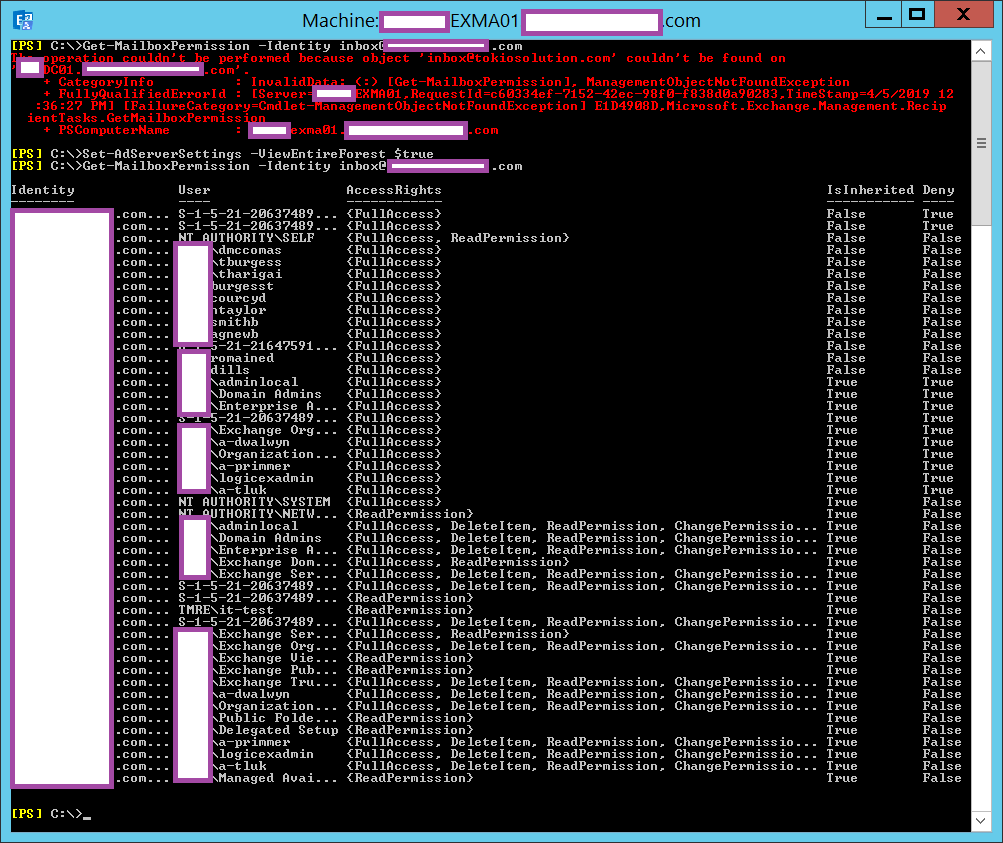One of the common questions I have been asked over the years is why the following error is thrown when an Exchange PowerShell cmdlet is executed on an object in another domain where the Exchange Organization is not installed with. The following is an example of the scenario:
- The environment has 1 forest and multiple domains
- The root domain name is contoso.com
- Another domain named tradewinds.com is in the same forest but a separate tree
- Exchange is installed into the contoso.com domain
You log onto one of the Exchange servers in the contoso.com domain and attempt to execute a cmdlet for an object in the tradewinds.com domain but receive the following error:
Get-MailboxPermission -Identity inbox@tradewinds.com
The operation couldn’t be performed because object ‘inbox@tradewinds.com’ couldn’t be found on
‘contDC01.contoso.com‘.
+ CategoryInfo : InvalidData: (:) [Get-MailboxPermission], ManagementObjectNotFoundException
+ FullyQualifiedErrorId : [Server=contBMEXMA01,RequestId=c60334ef-7152-42ec-98f0-f838d0a90283,TimeStamp=4/5/2019 12
:36:27 PM] [FailureCategory=Cmdlet-ManagementObjectNotFoundException] E1D4908D,Microsoft.Exchange.Management.Recip
ientTasks.GetMailboxPermission
+ PSComputerName : contbmexma01.contoso.com
The reason why this error is thrown is because any cmdlets executed in the default context will only look up objects in the domain where Exchange is installed. In order to search for objects outside of the current domain, you will either need to:
- Log onto an Exchange server that is joined to that domain (if there is one)
- Use the DomainController switch to specify a domain controller in that domain
- Execute the follow cmdlet to expand the scope to include the entire forest (not that this can cause searches to be slow if the environment is large):
Set-AdServerSettings -ViewEntireForest $true





One Response
thank you. Helped me.